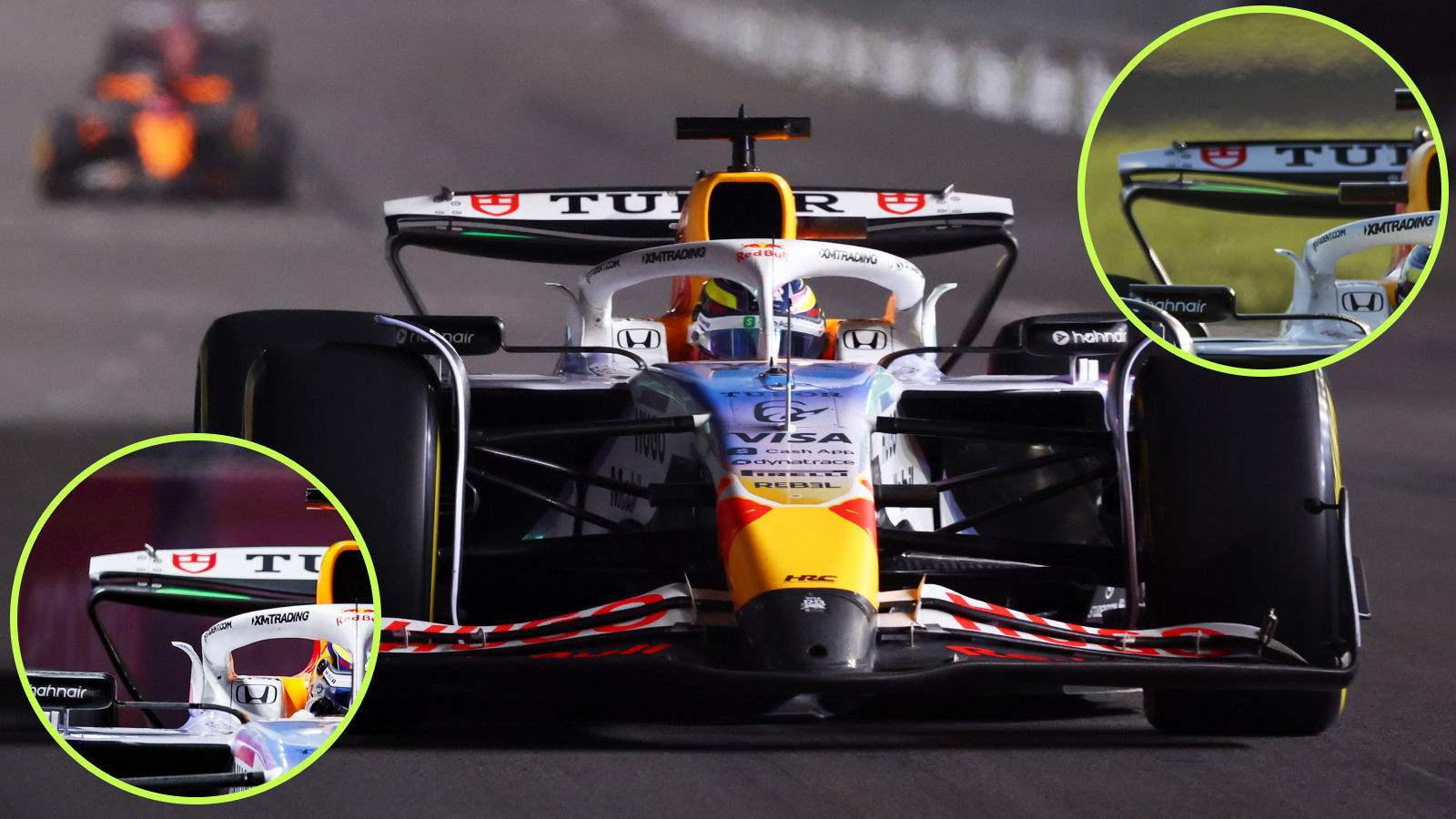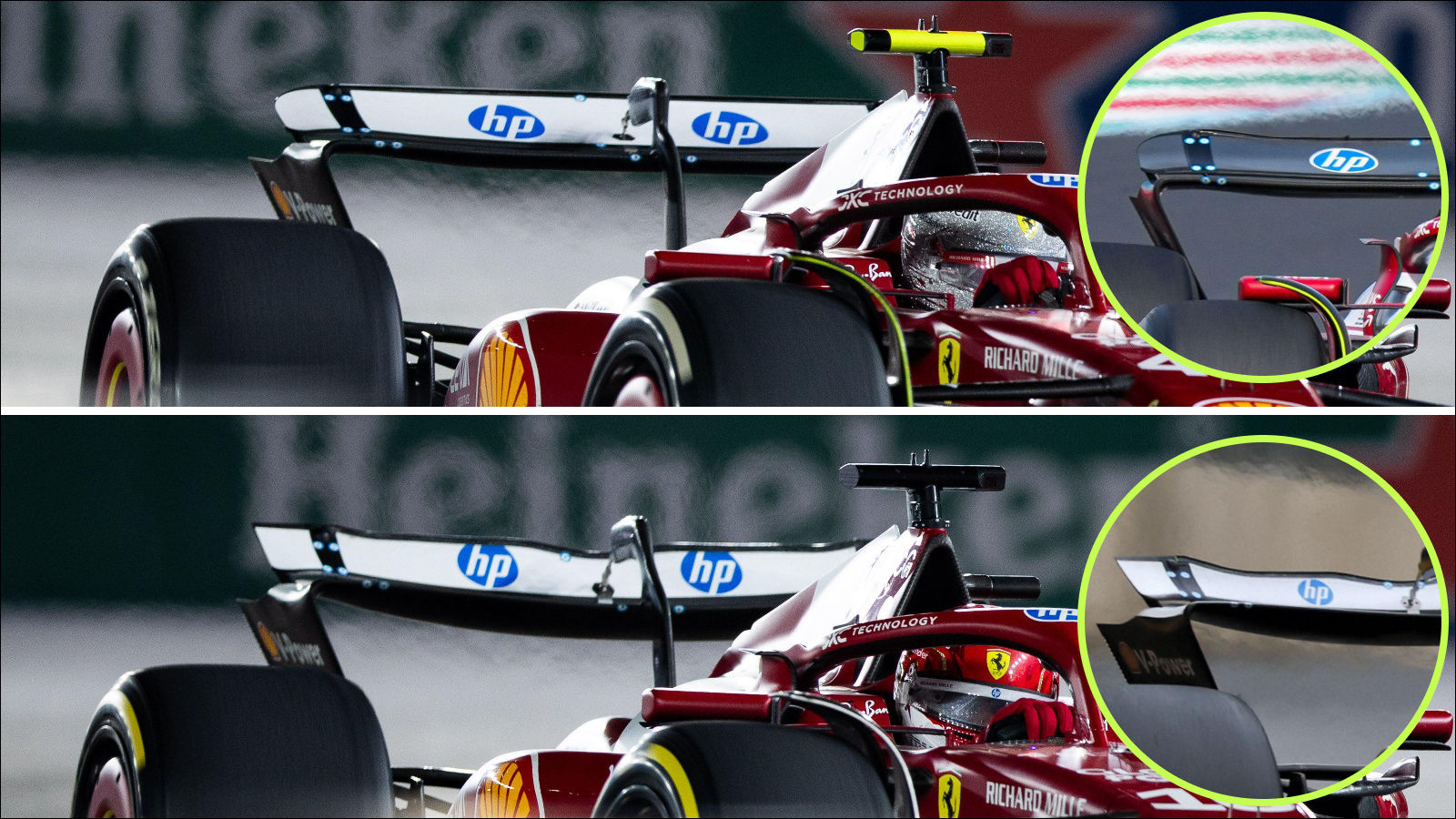F1 uncovered: Short-lived updates and split in-team setups in Las Vegas

Three teams arrived with updates for the Las Vegas Grand Prix, as they looked to improve their efficiency at a venue that’s previously seen teams run less downforce and drag than they’ve done earlier in the season at Monza.
This is not an unusual practice, with teams used to trimming their solutions for the challenges posed by the Las Vegas street circuit since its arrival on the calendar.
New isn’t always better
The newly introduced front and rear wing solutions from McLaren were a short-lived addition to their arsenal though, as the team gave them a brief outing during FP1 on Friday.
Extremely low grip and the threat posed by the tyre graining issues seen last season, left many of the teams guarding against those issues.
But, given a lack of running on Friday for everyone, the switch to a more loaded arrangement seemed like a smart move by McLaren, one that seemingly paid dividends when the weather closed in for Qualifying.

In terms of the differences between the two specifications it’s clear that there wasn’t a significantly new approach, rather the designers had looked at ways to trim their pre-existing designs.
This resulted in a crescent-shaped cutout being implemented in the upper flap of the front wing, in a similar vein to what we’ve seen the team employ before (dotted line).
The data behind the Las Vegas Grand Prix
👉 Lando Norris data provides new evidence after late-race Las Vegas GP crisis
👉 From Q1 disaster to Las Vegas podium: Kimi Antonelli data tells all
Meanwhile, a quite significant section of the rear wing’s upper flap had also been trimmed on the assembly trialed by Piastri, seen above, inset (dotted line).

Racing Bulls also announced a new rear wing solution for Las Vegas, citing that ‘the upper rear wing flap has been changed to meet the needs of the target downforce & efficiency level for the circuit’ in the car presentation document.
In terms of the differences between the specification used at the Italian Grand Prix (upper right inset) and the one used in Las Vegas (main image), it’s the size and shape of the Gurney flap that offers the most difference, with a slimmer version used this weekend.
Notably, Isack Hadjar continued to employ this during the race weekend, whereas Liam Lawson opted to remove the Gurney altogether (lower left inset).

Ferrari might not have had new solutions at their disposal for Las Vegas but that doesn’t mean they weren’t trying to find a way to extract the most from the SF-25 for their drivers.
Interestingly, the arrangement on Hamilton’s car (top) was similar to the one used at Monza (inset, upper right), albeit without the trailing edge upper flap trim used at the Italian Grand Prix.
Meanwhile, Leclerc (bottom) had an even more loaded arrangement, similar to the one used on the streets of Baku (inset, lower right), which likely helped more so with tyre management but hindered his progress in terms of straightline speed.
He said as much after the race, explaining: “I was pushing 200% the whole race. I don’t think I left anything on the table.
“I also pushed a lot behind to try and get as close as possible. I had to, because otherwise I would lose DRS, and without the DRS, I was dead slow, so just a bit of a tough race to manage.”
Read next: Las Vegas GP conclusions: Max spooks Norris, McLaren DSQ silver lining, Hamilton’s Ferrari regret?
